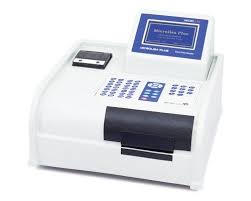


An ELISA plate reader, also known as a microplate reader, is a laboratory instrument used to detect and quantify biological substances in enzyme-linked immunosorbent assays (ELISA). Read more
These assays are widely employed in fields such as immunology, clinical diagnostics, and research for measuring concentrations of antigens, antibodies, proteins, and hormones.
Multi-Detection Modes: ELISA plate readers can measure absorbance, fluorescence, and luminescence, depending on the assay requirements. This versatility allows researchers to use various detection methods for different experiments.
High Throughput: These instruments can process 96-well or 384-well microplates simultaneously, making them ideal for high-throughput screening applications in drug discovery and diagnostics.
Automation and Software Integration: Many modern plate readers come with advanced software for data analysis, allowing users to automate data collection and interpretation, enhancing productivity and accuracy.
Wavelength Flexibility: ELISA plate readers can often be configured to measure multiple wavelengths, which is essential for assays that require specific detection conditions (e.g., different wavelengths for fluorescent or colorimetric assays).
User-Friendly Interface: Most devices feature intuitive software with customizable protocols, making it easy for researchers to set up and run experiments.
| Specifications | Descriptions |
|---|---|

Lorem, ipsum dolor sit amet consectetur adipisicing elit. Exercitationem, facere nesciunt doloremque nobis debitis sint?
Your experience on this site will be improved by allowing cookies.